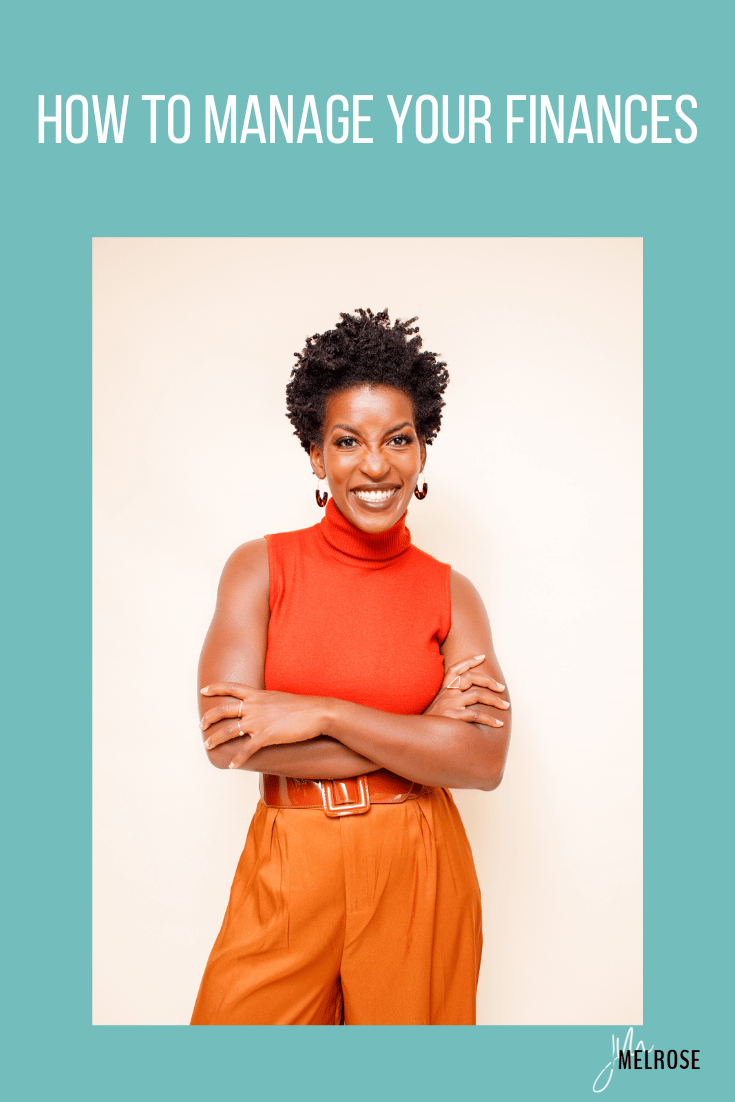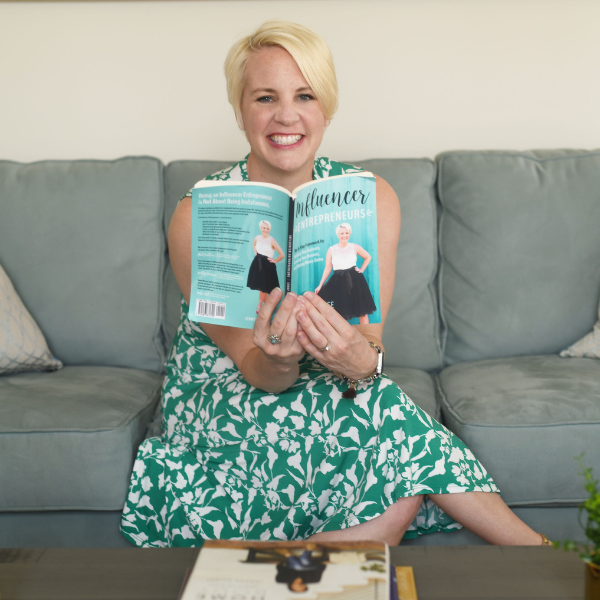Learn the best strategies to manage your money so that you can confidently know how to manage your finances to build wealth.
IE 369: How to Manage Your Finances Intentionally To Go Beyond Feast or Famine

If you struggle with the money aspect or feel stressed over it, this episode will help put your mind at ease as you learn to manage your finances intentionally, understand your debt story, prepare for wealth, and learn why your budget is a tool that helps you instead of a negative consequence.
Keina Newell is a financial coach at Wealth Over Now. She works predominantly with single women and solopreneurs to learn how to budget their way to wealth.
Her goal is to get women to talk about money instead of cringing over the word “budget.”
Typically, we start a business because we have the desire to create wealth.
A budget is a tool to see what is happening with your money so you can do the things you desire to be doing with your money.
Many times, people grimace when they hear the word “budget” because they remember being in a time of famine when they had to count all of their pennies, and sticking to a budget was difficult.
How can I create a budget and stick to it?
Budgeting is being honest with how you want to spend your money. Often, we view budgeting as restricting and not spending money.
A lot of people will say that you cannot go get your latte because that makes you poor. Instead, think about what are the things that you desire to spend money on, especially in your business.
Create your best-case scenario. For example, there are coaches and programs you want to invest in, and projects you want to do. Creating a budget with these in mind will give you a clearer picture of what it takes to run your business.
In addition to having your business expenses in one place, you want to pay yourself. Knowing your expenses is more than just knowing the bills (mortgage, utilities, etc.). You also need to include the Nordstrom anniversary sale, your vacation to Cabo with your girlfriends, and the $6000 a year you spend on travel.
Instead of just focusing on the bills, also focus on the things you wish you had money for. You also want to include things like tires on your car and auto maintenance if you have a car.
If you take the time to lay out your expenses from both the business and personal sides, you will get some clarity on where money needs to move.
This will give you less mental stress and anguish about how much you are spending because you can make some intentional decisions about what you really need and how much you want to pay yourself.
The personal aspect of knowing what we truly want in life is important to connect to our businesses. While some people want to travel, others want to create legacy wealth to pass on. It is important to know those personal goals and be concise about them while creating your budget.
When considering wealth building, it may be hard to think about the 7,000,000 you might need in the future so it is important to think about the little luxuries you will want.
Keina has some clients that think having $10,000 in the bank is unobtainable so that might be the first benchmark she helps them work towards.
Perhaps it is someone to help clean your house so you can get back time. What are the things you can add to your budget to make you feel excited to pay for?
Your budget is not a consequence of not having money. Your budget is a tool that is a list of decisions on how you want to spend money. It is personalized for you and your values.
What is the difference between between essential and nonessential expenses and how do we prioritize them?
The essential expenses are the ones that you need to “keep the lights on.”
On the personal side, it is knowing the things you do not HAVE to have, a massage for example. These are non-essential expenses.
Using both essential and non-essential expense lists can help you build reserves. For example, if you know that you must have a $4,000 minimum to run your business, you can think about building 3 or 6 months of reserves to run your business.
You can do the same thing on the personal side of the budget. If you know the difference between your essential and non-essential expenses, you will know what you might need to cut and the expenses you would need to maintain the budget.
If you are unable to pay yourself, saving money in your business would not be the immediate priority. Knowing your bare minimum number is helpful to know what to save, invest, create an emergency plan, etc.
How should I prioritize paying off debt, and what’s the best approach to do it?
The way you pay off debt is going to depend on the person.
Keina believes that you shouldn’t use a lump sum of money to pay off debt if you don’t understand why you are in debt. Otherwise, you are only treating a symptom and not treating the root of how you got into the debt problem.
One example of this is using the money you have from a successful product launch to pay off your credit card when you are not really paying attention to another expense that is causing the debt. When you use the extra money you just got to pay off debt, you now create cash flow issues.
Instead, you should pause, understand your cash flow month to month, and look at your expenses first. Knowing those numbers will give you clarity to know how much income you actually have to put toward your debt.
You need to know why you are in debt and then have a plan to pay off the debt. If you are going into debt because each quarter you are doing a project, then you will need to add a project fund into your budget so you will have funds to do those projects.
Kiena likes to use the strategy of taking a percentage of your overall monthly income to put towards debt.
You want to see your debt decrease with the extra payments beyond the minimum but because you have a budget, the debt will not go back up.
People need to understand their numbers holistically before they go for solving the debt.
What are some strategies for saving money and building an emergency fund?
This comes back to the budget. You can equate this to a picture and you get to paint whatever picture you want.
You will think about your retirement and the numbers you need to live and pay off debt to figure out what that number looks like. You can look at 3, 6, and 12-month numbers to think about what you want.
This will help calm your nervous system and allow you to make money in your business. Business owners need to have something to show for the money they are making.
Sometimes, business owners appear to have it together to the outside world when in reality, they are stressed about finances, having knee-jerk reactions to expenses/debt, or living invoice-to-invoice, launch-to-launch cycles.
While you may not think you are in a cycle like this, if you are worried about how much money the next launch will make, you don’t have money.
Keina wants business owners to be in a place where even if a launch isn’t as successful as they would like, they will still be in a good place financially because they have a plan for their numbers.
What does the nitty-gritty of that look like?
- You have saved for taxes.
- You have saved for expenses.
- You are building reserves in your business.
- You are able to pay yourself.
- Things feel calm.
If you are calm about the money situation, you can come up with ideas, have the energy to get through launches without feeling burnt out, etc.
When you put making money and managing money in the same suite of skills, it is beautiful. You are going to create more of what you want and you will see what you desire come into view.
Budgeting is just math and we can all do that. It is also, however, creating safety.
What did you think it would be like if you made multiple six figures in your business? What have you told yourself about how you might do things differently when you reach a certain income level?
There are some hidden stories that you probably haven’t paid attention to.
You wanted life to be better and seemingly, it is but you still manage money the same way from $50,000 a year to $500,000 a year. You also need to consider how family plays into this. You are wearing a lot more hats and need to sort through the obligations you have so you feel good about where your money is going.
Kiena offers a great Guide to Freedom an Flexibility to help us get our finances under control.
This template is to help business owners look at their business expenses, annually or monthly. It helps you have an overall understanding of how much it costs you to run your business year to year and month to month.
This might include client gifts, generosity to contractors if you give them a bonus, ads, and things that happen.
You will put in these numbers so you have an overall, holistic view of how much it costs to run your business month-to-month. This will help you understand if you are getting the ROI (return on investment) that you desire and to have an honest conversation with yourself.
Is money going out the way you desire and creating the return you want? It might mean canceling subscriptions or even reducing your team if you are not utilizing them effectively.
If it is not resulting in growth in your business, what is the point? Why are you doing it?
Download the Guide to Freedom and Flexibility today!
Action Steps:
- If you liked this episode of Influencer Entrepreneurs, please subscribe and leave a fabulous review!
- Join the conversation on Instagram by tagging Jenny when you’re listening to the podcast. She’ll send you a personal message whenever you tag her.


